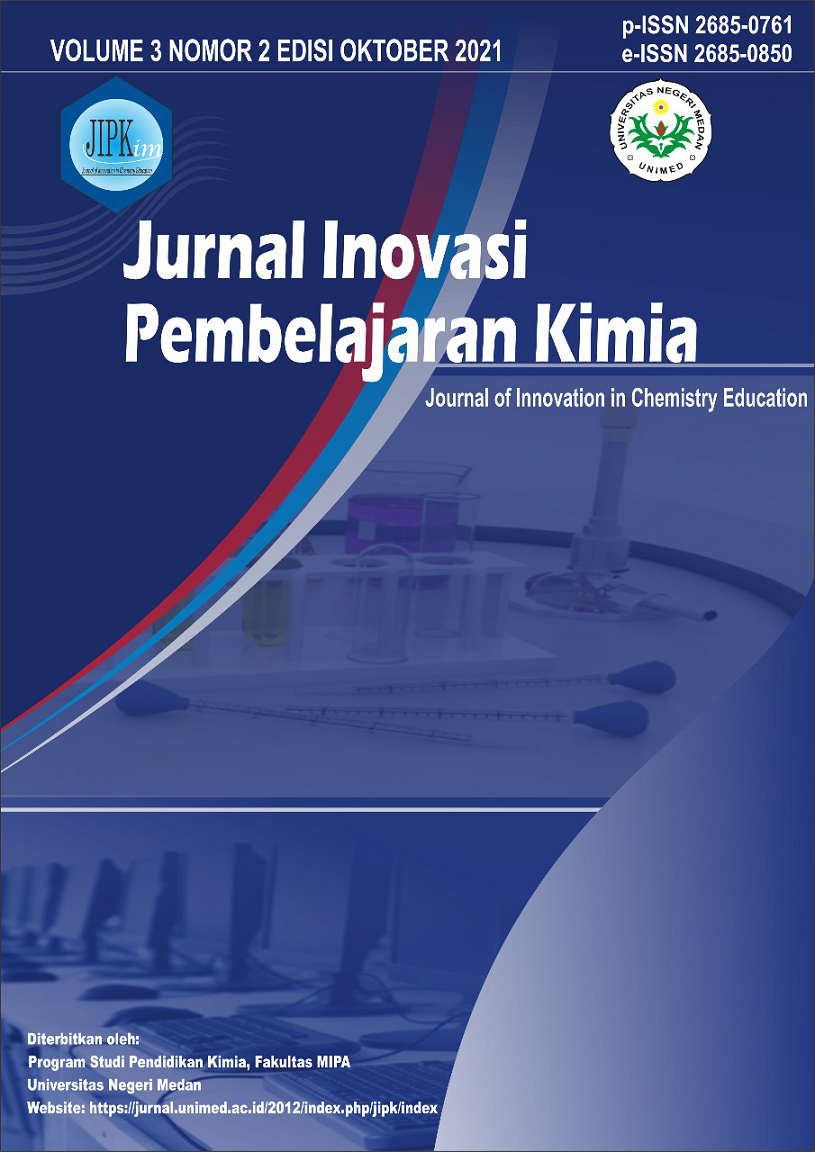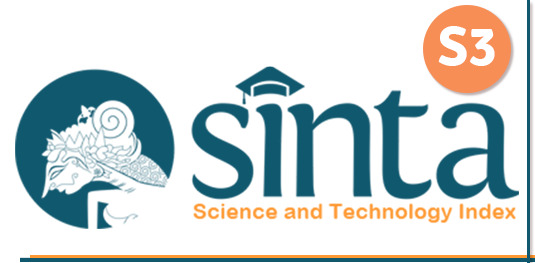Pengembangan E-Magazine Reaksi Reduksi dan Oksidasi Sebagai Media Pembelajaran Kimia Kelas X SMA/MA
DOI:
https://doi.org/10.24114/jipk.v3i2.28111Keywords:
E-magazine, Media, Pengembangan, Reaksi Reduksi dan OksidasiAbstract
This development research refers to several analyzes carried out, namely performance analysis in learning, student analysis, which is a study of student characteristics based on knowledge, skills, and development. Analysis of facts, concepts, principles and needs based on current problems, namely learning from home caused by the covid-19 pandemic which requires learning media. Learning media that can meet today's learning needs are chemistry E-magazines that can be accessed anytime and anywhere with valid, practical, and effective criteria. The e-magazine is then validated first by the supervisor and three material validators and media validators. After the e-magazine is said to be valid, it is tested in learning. The development model used in this study is the ADDIE model (Analysis, Design, Development, Implementation, and Evaluation). After going through the stages of analysis, design, and development of a valid E-Magazine, it was first tested on a small group (initial field trial) and revised. After the initial revision, it was re-tested to a large group (main field trial) to see the effectiveness and practicality of the E-Magazine. The sample in this study were students of class X MIA 2 The initial field trial class amounted to 9 students and Class X MIA 3 as the main field trial class amounted to 30 students at the implementation stage of ADDIE with the object of research namely E-Magazine Reaction Reduction and Oxidation that has been developed. Collecting data using instruments in the form of observation sheets, questionnaires for assessment of material experts, media experts, teachers and students. Qualitative data analysis using a Likert scale and quantitatively based on the Post Test scores of students' learning outcomes. The results of the development obtained that the E-Magazine profile of Reduction and Oxidation Reactions met the validity criteria, showing 1.00 (very high criteria) in terms of questionnaire responses from media experts and material experts. The results of the practicality analysis in terms of the teacher and student response questionnaires obtained each percentage of 90.90% (very practical criteria) for the teacher's response to the initial field trial and 95.45% (very practical criteria) for the main field trial. In the questionnaire responses, students each obtained a percentage of 79.75% (practical criteria) for the initial field trial and 85.50% (very practical criteria) for the main field trial and the results of the effectiveness analysis based on the students' completeness in the post test. obtained a percentage of 79.75% for the initial field trial and the main field trial obtained a percentage of 86.67%. Thus, it can be concluded that the Reduction and Oxidation Reaction E-Magazine that has been developed meets the criteria of being valid, practical, and effective.References
Amir, Zubaidah., dkk. 2015. Psikologi Pembelajaran Matematika. Yogyakarta: Aswaja Pressindo.
Annisa, A. 2013. Pengaruh Employee Engagement Terhadap Kinerja Karyawan PT. Chandra Sakti Leasing Jakarta. Universitas Indonesia.
Astuti, Rachmawati Nur Puji dan Rina Trisnawati. 2015. Pengaruh Karakteristik Perusahaan Manufaktur Terhadap Pengungkapan Corporate Social Responsibility (CSR) Serta Dampaknya Terhadap Reaksi Investor. Seminar Nasional Paper dan The 2nd Call for Syariah Paper-ISSN 2460-0784.
Indriana, Dina. (2011). Ragam Alat Bantu Media Pengajaran. Yogyakarta: DIVA Press.
Novtasya Arfysta Puri, Della., Epinur dan Muhaimin. 2019. Pengembangan E-Megazine Materi Kesetimbangan Kimia Di SMAN 1 Kota Jambi. Journal of the Indonesian Society Of Integrated Chemistry. Volume 11 Nomor 1. Universitas Jambi.
Pakpahan, Alhuda., Abdul Gani dan M. Hasan. 2016. Pengembangan Majalah Kimia Pada Materi Hukum-hukum Dasar Kimia Kelas X. Jurnal Ilmiah Mahapeserta didik Pendidikan Kimia (JIMPK). Volume 1 Nomor 4. Universitas Syiah Kuala.
Permendiknas No. 22 Tahun 2006 Tentang Standar Isi
Prasetyo, E., 2012 Data Mining Konsep dan Aplikasi Menggunakan Matlab, Andi Offset, Yogyakarta
Riduwan. 2007. Skala Pengukuran Variabel-variabel Penelitian. Bandung: Alfabeta.
Ristiyani, E., Bahriah, E. S. 2016. Analisis Kesulitan Belajar Kimia Peserta didik Di SMAN X Kota Tangerang Selatan. Jurnal Penelitian dan Pembelajaran IPA. Vol 2. No 1.
Setiaji, S.II., dan P. Yatiman. 2013. Pengembangan Majalah Kimia sebagai Sumber Belajar Mandiri pada Pembelajaran Kimia Peserta didik SMA/MA Kelas XII Materi Makromolekul. E Journal Universitas Negeri Yogyakarta, 3(88): 1 -88.
S. Eko Putro Widoyoko. 2009. Evaluasi Program Pembelajaran. Yogyakarta: Pustaka Belajar
Hairida dan Astuti. 2012. Self Efficacy dan Prestasi Belajar Siswa dalam Pembelajaran IPA-Kimia. Jurnal Pendidikan Matematika dan IPA. Vol.3.No.1.













